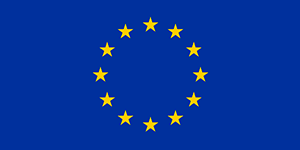Publishable summary: Environmental impact is becoming a more important factor to consider in the decision-making process of industrial investments. The ambition of CORALIS is to contribute to the targets set in these EU-level documents and to provide additional recommendations to define a favourable framework for the further expansion of industrial symbiosis throughout Europe. It has been detected that companies in general are having difficulties in evaluating the environmental impact of the actions they implement, including which method to apply for emissions and waste accounting. In addition, when actions are a result of efforts of multiple parties, such as in a symbiosis network, it becomes even more complicated, and the question of the applicability of existing standards and methods to accurately capture the co-creation of environmental gains is gaining increased attention. In addition, there is not any type of standard that supports this type of mutual relations between companies.
The objective of this activity is therefore to investigate how to quantify the environmental impacts and identify how to approach the challenges that have been detected in this process in previous work and provide some guidelines on how to conduct environmental impact assessments for new industrial symbiosis initiatives that later will be published in the CORALIS Handbook.
The work within task 3.3 suggests that different types of assessment methods can be appropriate depending on Industrial symbiosis readiness level (ISRL). Given that industrial symbiosis is defined as the use by one company or sector of underutilised resources from other companies or sectors, offered by geographic proximity, the involved parties are potentially enabling reductions of resource use and of other environmental impacts through collective efforts. Therefore, the distribution of these burdens and benefits is probably best approached as a process, in which the actors need to come to a consensus amongst them about the distribution of environmental benefits and burdens, based on common and shared information on industrial symbiosis environmental performance.
In Sweden, the future symbiotic solution is built on connecting three entities – an existing pulp and paper mill, a greenhouse (Swedish demo) and an aquaculture facility that are yet to be built. The symbiotic exchange consists of using residual heat (in greenhouse and aquafarm) and CO2 (in greenhouse). The environmental assessment of this symbiosis is interesting for multiple reasons, since several actors are involved, it is prospective, rather difficult to select suitable reference scenarios and there are several important environmental impacts to assess. This case therefore presents complexities that will be further explored within the project, and the methodologies suggested aim to capture the impact of future developments and dynamics of both foreground and background systems, and how to share gains and burden amongst different actors.
In Brescia demo case, the quantity of reused/circulated materials by the partners is very limited respect to the raw materials utilised in the standard processes. Therefore, it is very difficult to identify the contribution of the emissions generated by the use of recycled materials respect to the ordinary emissions. It is expected that the major impact be from the reduction of waste, so from the solid materials point of view, the main factor is the reduction of wastes landfilling. From the emissions point of view, the main factor is the partial substitution of coal with biochar.
In Escombreras demo case the main variables with an environmental impact are the lower use of electricity and the saving in raw materials due to the use of CO2 from a neighbour company. The use of CO2 allows QSr to recover HCl and CaCO3, used in other parts of the plant, and decreasing the consumption of these raw materials from the suppliers. The limits for a more precise study correspond to the micro scale since they assure a complete availability of all the data with high precision and at the same time the aim of the analysis is totally fulfilled. Further extension of the limits would imply the selection of a more complex functional unit and assumption of a high uncertainty for some data.
This task proposes two interlinked activities, to continue working on common steps for the environmental evaluation of IS and to link this activity with the possibility of establishing an IS certificate.


